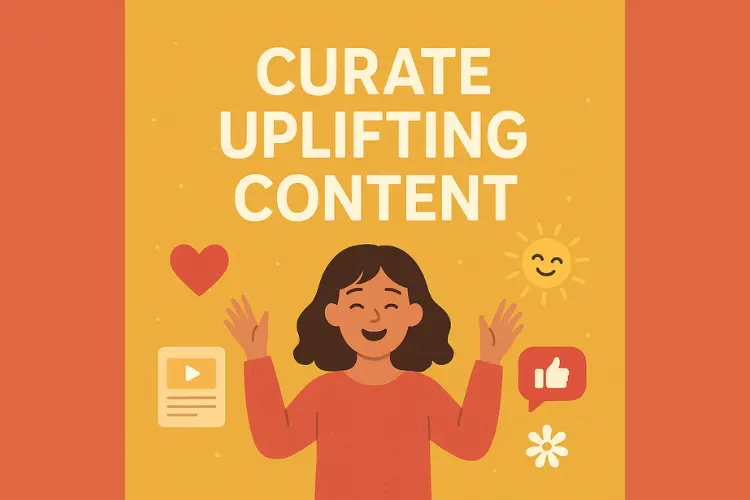1. Cut the Clutter: Trim Your Friends List
Think about this: how many people do you really know and care about? Maybe 10. Maybe 30. But on average, Facebook users have over 300 “friends.” Most of these connections are old classmates, colleagues, and people we haven’t talked to in years.
This huge network doesn’t just clutter your feed—it affects your emotions. More connections mean more posts. More posts mean more time scrolling. And that makes it more likely you’ll stumble on vacation pictures, engagement announcements, and job promotions—posts that can trigger envy or insecurity.
Start by asking yourself:
- Do I talk to this person in real life?
- Do I interact with them online?
- Does their content uplift or irritate me?
If someone’s posts bring negativity to your feed, take action. Unfriend if you’re comfortable. Or use the “Unfollow” option to hide their posts without causing any drama. The goal is to make your feed cleaner, calmer, and more meaningful.
2. Pick Your Platform Wisely
Not all social media platforms are created equal. Some naturally create more stress than others.
For example, Facebook often mixes personal updates with political debates. Twitter is fast-paced and filled with opinions. Pinterest can make you feel inadequate if you don’t have a “picture-perfect” life. On the other hand, Snapchat and Instagram often focus more on fun and visuals, which can feel lighter and more positive.
Ask yourself:
- Does this platform make me feel inspired or anxious?
- Do I leave this app feeling better or worse?
- Am I here out of habit or because I enjoy it?
Spend more time on platforms that leave you smiling and less on those that drain your energy. Life is too short to be stressed by an app.
3. Curate Uplifting Content
Take control of your feed by choosing who and what you follow. If your timeline is full of arguments, unrealistic fitness goals, or content that just doesn’t speak to you—it’s time to do a little digital spring cleaning.
Here’s how to start:
- Follow people who uplift you. Think of friends who post happy, funny, or encouraging things.
- Add accounts that inspire you. This could be authors, artists, educators, or communities with positive messages.
- Mute or unfollow negativity. If someone constantly shares drama, politics, or content that frustrates you, let them go.
Everyone’s feed should be different. Some people love fitness pages; others prefer daily quotes or pet videos. Know what lifts your mood and lean into it.
Also, avoid following people just because everyone else does. Follow content that helps you grow, learn, laugh, or relax. That’s the true power of social media.
4. Stay Away from the Comments Section
Let’s be honest: the comment section is rarely where kindness lives.
On most platforms, comments are filled with arguments, trolling, and negativity. Even on a harmless post, you’ll often find people being rude, sarcastic, or aggressive.
Here’s why you should avoid them:
- They waste your time.
- They often upset you.
- They rarely add value to your day.
If you’re looking for useful discussion, there are better places than the comment sections of viral videos or news posts. Use that time for something more productive—reading a book, taking a walk, or messaging a friend directly.
Your peace of mind is worth more than winning a comment war.
5. Live More Offline
One of the best ways to beat social media stress? Spend less time online—and more time living.
We often compare our boring Tuesday morning to someone else’s once-in-a-lifetime vacation photo. But remember: social media is a highlight reel. It shows the best parts of people’s lives, not the full picture.
If you feel like your life is dull in comparison, try to ask yourself:
- Am I doing things that excite me outside of my screen?
- Have I explored new hobbies, interests, or connections offline?
- Do I schedule time away from my phone?
Living offline doesn’t mean giving up on technology. It just means being more intentional. Go out for coffee with a friend. Take a day trip. Start journaling, gardening, or learning a new skill. Even a short walk outside can reset your mindset.
When you live more in the real world, you bring fresh energy back to your online experience. You stop watching life happen—and start living it.
Final Thoughts: Make Social Media Work for You
Social media doesn’t have to feel toxic. With small, smart changes, you can make it a source of connection, inspiration, and even joy. It starts with trimming the noise, choosing the right platforms, and following content that uplifts your spirit.
Remember, social media is a tool. You decide how to use it. Don’t let it control your emotions or your self-worth. Your mental well-being is more important than any follower count.
And if you’re a parent or someone managing internet safety at home, tools like CleanRouter can help create safer, healthier online spaces for your family. It allows you to filter content, monitor usage, and make sure every online experience is a positive one.
So, take control today. Curate your digital world with intention—and let social media serve your life, not steal from it.




